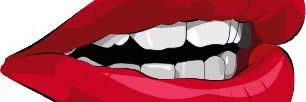HEAVILY armed anti-Gaddafi fighters have tightened their siege of the ousted Libyan leader’s hometown of Sirte, as hundreds of terrified civilians poured out of the Mediterranean coastal city.
Fleeing residents today spoke of dwindling supplies of food and water and said Gaddafi forces had attempted to stop people leaving, while doctors warned of a growing humanitarian crisis.
Fighters loyal to the new government also pounded Muammar Gaddafi’s forces in the desert city of Bani Walid, southeast of the capital Tripoli, the only other significant stronghold left to his loyalists.
National Transitional Council (NTC) troops advancing from the east said they had pushed 10km inside Sirte’s outskirts but were still 15km from the centre of the sprawling city.
NTC fighters captured a large weapons cache from loyalist forces including Grad rockets and machine gun ammunition.
Crates of grenades were loaded aboard more than a dozen pick-ups and hauled to a base by dozens of fighters shouting “Allahu akbar!” (God is greater), flashing victory signs and firing in the air.
Hundreds of fearful residents fled the looming offensive, arriving at NTC checkpoints on the front lines both east and west.
“The situation in the city is very critical,” said Muftah Mohammed, leaving in a convoy of seven vehicles.
“There is no food, no water, no petrol and no electricity. This has been going on for nearly two months now as Gaddafi forces would not allow us to leave.
“Children are in a particularly bad condition.”
The collapse of the mains supply has left residents without access to clean drinking water, triggering an epidemic of water-borne diseases.
An AFP correspondent saw dozens of children receiving treatment at a clinic in the town of Harawa, 40km east of Sirte.
“We have medicines but no nurses to treat the constant flow of patients, mainly children, suffering from vomiting and gastrointestinal diseases,” said Dr Valentina Rybakova, a Ukrainian working in Libya for eight years.
“Since morning I saw nearly 120 patients and 70 per cent of them were children. They are coming from some outskirts of Sirte and nearby villages,” she said.
“This is a big humanitarian crisis. We are trying to get help from everybody but the main problem is that these people have no access to clean drinking water.”
NATO said on Monday its aircraft had multiple military targets in Sirte. Britain however said it had agreed with the alliance to withdraw the five Apache helicopters it has in service over Libya, a clear sign the NATO air mission is winding down.
Later on Monday, NTC Commander Mustafa bin Dardef reported fresh clashes near Sirte.
There have been repeated reports that one of Gaddafi’s sons – Mutassim – is holed up in Sirte’s southern outskirts.
NTC forces believe Gaddafi’s most prominent son, Seif al-Islam, is in the other major enclave still in the hands of loyalist forces, the desert city of Bani Walid.
Troops massed at Bani Walid’s northern gates pounded Gaddafi positions with artillery, tanks and anti-aircraft guns.
“We are facing heavy resistance, that’s why we are using the heavy artillery and not sending in any infantry for now,” Commander Mohamed al-Seddiq said.
The NTC is keen to put Gaddafi, whose whereabouts are unknown, and top members of his former regime on trial for what they say were widespread human rights abuses committed during his 42-year rule.
NTC number two Mahmud Jibril, the interim premier, told the UN Security Council Gaddafi was a growing international terrorist threat.
“The simple fact that he is free and has at his disposal such wealth means that he is still able to destabilise the situation not only within my country but also in the Sahel and Sahara region,” Jibril told the council.
Even outside Africa, Gaddafi “could return to his terrorist practices by providing arms” to militant groups, he added.
The gruesome find in a mass grave of the remains of prisoners executed at Tripoli’s notorious Abu Salim jail was yet further proof of “criminal acts” by Gaddafi’s regime, said Khalid Sharif, spokesman for the NTC’s military council.
Sharif, who announced the find on Sunday, said the grave was believed to hold the remains of more than 1700 people.

Be the first to comment